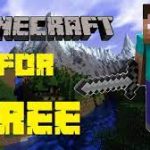In the vast and block-filled world of Minecraft, creating and nurturing a thriving village is a rewarding and fulfilling endeavor. Villagers play a crucial role in the game, serving as a source of valuable trades, enchantments, and even companionship. To expand your village and ensure its prosperity, mastering the art of breeding villagers becomes essential.
Breeding villagers in Minecraft involves creating an environment that encourages them to form new families and populate the village. While it may seem simple at first, understanding the intricacies of this process can significantly impact your village’s growth and efficiency. With a few key steps and a little patience, you can successfully breed villagers and watch your population flourish.
This guide will provide you with a comprehensive overview of how to breed villagers in Minecraft, covering everything from establishing suitable housing and creating a suitable environment to understanding the mechanics of villager breeding and breeding requirements. Whether you’re a seasoned Minecraft player looking to expand your village or a beginner starting your first settlement, this guide will equip you with the knowledge to breed villagers effectively.

Understanding Villager Breeding Mechanics:
- Villager breeding in Minecraft involves creating suitable conditions for villagers to interact and procreate. Before diving into the breeding process, it’s essential to understand the underlying mechanics. Here are some key points to keep in mind:
-
Villagers must have enough food to breed. Carrots, potatoes, bread, and beetroots are all valid food items that villagers can consume.
-
Beds are crucial for villager breeding. Each villager must have access to a bed. Additionally, there must be more beds than villagers for successful breeding.
-
Villagers also require “workstations” to engage in their respective professions. These workstations include crafting tables, lecterns, and more, depending on the villager’s profession.
Building Suitable Housing:
- To begin breeding villagers, you’ll need to create appropriate housing within your village. Here’s how you can do it:
-
Start by constructing houses with enough beds for each villager and additional beds for potential babies. The beds should be accessible to the villagers without any obstructions.
-
Place workstations near the beds to provide the villagers with their required profession-specific blocks.
-
Ensure that the houses are well-lit and adequately enclosed to protect the villagers from threats such as zombies and other hostile mobs.
Providing a Sustainable Food Source:
- Food plays a crucial role in the breeding process. Villagers need to have enough food in their inventory to be willing to breed. Here’s how you can ensure a sustainable food source:
-
Set up a farm near the village and grow crops such as carrots, potatoes, wheat, and beetroots. This will provide a steady supply of food for the villagers.
-
Harvest the crops and distribute them to the villagers. You can throw the food items on the ground near the villagers, and they will automatically pick them up.
-
Make sure there are enough food items available for each villager. If necessary, expand your farm to meet the growing demands of the village population.
Encouraging Villagers to Breed:
- Once you’ve created suitable housing and provided an ample food supply, it’s time to encourage the villagers to breed. Here’s what you can do:
-
Ensure that there are more beds than villagers in the village. This surplus of beds will create opportunities for new villagers to spawn.
-
Ensure that there is a sufficient number of unclaimed workstations available for the villagers. Each villager needs to have access to a workstation to begin breeding.
-
Trade with the villagers to increase their willingness to breed. Trading with villagers will unlock additional trades and increase their overall willingness to reproduce.
Expanding Your Village:
- As the breeding process takes place and new villagers are born, your village will grow and expand. Here are a few tips for managing a growing population:
-
Continue providing enough beds and workstations for the new villagers. Remember to maintain a surplus of beds to allow for future breeding.
-
Ensure that the village remains well-lit and adequately protected to prevent any harm to the villagers from hostile mobs.
-
Consider building additional infrastructure such as iron golem farms or transportation systems to facilitate the smooth functioning of the village.
-
Explore and interact with neighboring villages to establish trade routes and improve the overall prosperity of your village.
Conclusion:
Breeding villagers in Minecraft adds life and activity to your virtual world. By creating suitable housing, providing a sustainable food source, and encouraging villagers to breed, you can expand your village and create a thriving community. Remember to maintain a balanced population, protect the villagers from threats, and continue exploring new opportunities to enhance your Minecraft experience.




![Shadow Fight Shades MOD APK[Unlimited Gems, God Mode]v1.3.2](https://apkshub.in/wp-content/uploads/2024/04/Shadow-Fight-Shades-MOD-APKUnlimited-Gems-God-Modev1.3.2-1-75x75.webp)










